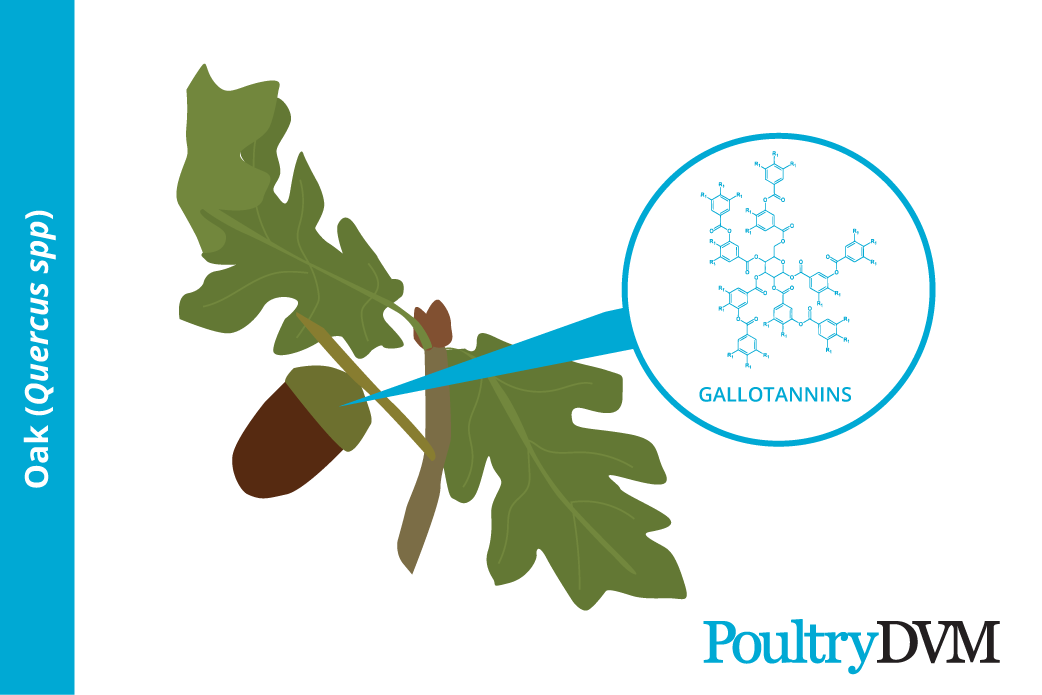Oak (
Quercus) species are a highly abundant group of slow-growing, deciduous, hardwood trees; 60 of which are native to North America. Oaks are classified into two groups--red and white oaks. Both groups produce acorns, which are nuts with a tough leathery shell that fall from trees in the autumn season.
Red oaks have pointed leaves with bristle-tipped lobes and white oaks have rounded lobed or large regular teethed leaves. Leaves are often clustered at the ends of twigs.
Toxic components
The acorns, buds, twigs, and leaves from oak trees can all be potentially harmful to poultry if eaten. Most poisoning cases have involved the consumption of young, immature leaves in the spring and/or freshly fallen acorns in the autumn, as these contain the highest concentrations of tannins. Black and red oaks tend to have higher concentrations of tannins than other oak species, meaning they're more toxic. Tannins are complex, polyphenolic compounds that are responsible for the flavor of many nuts, wines, coffees, and tobaccos.
Upon consumption of the acorns, the tannic acid causes ulcerations in the bird's gastrointestinal tract and damage to the renal tubules. Usually it will result in kidney failure prior to the bird's death.
